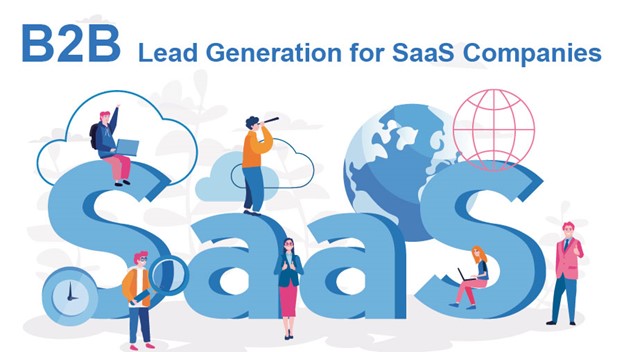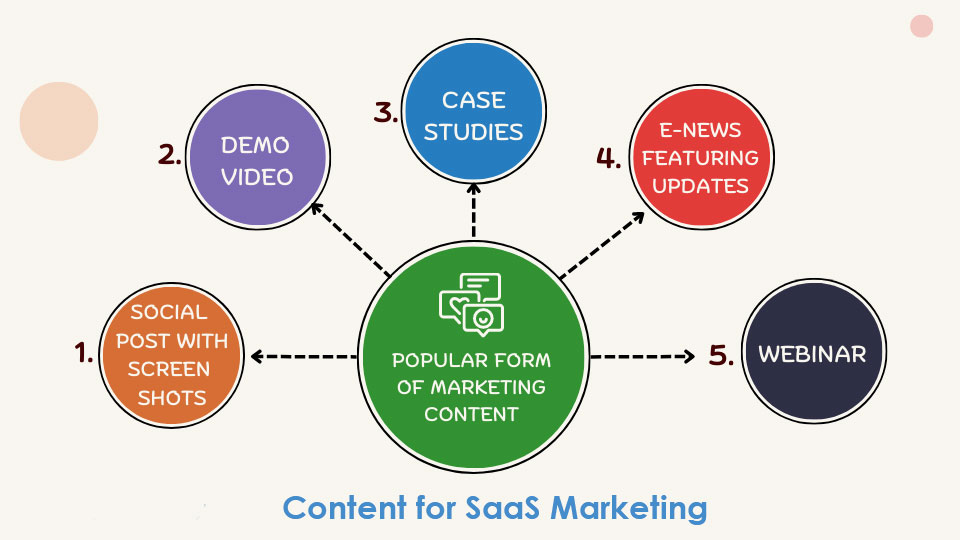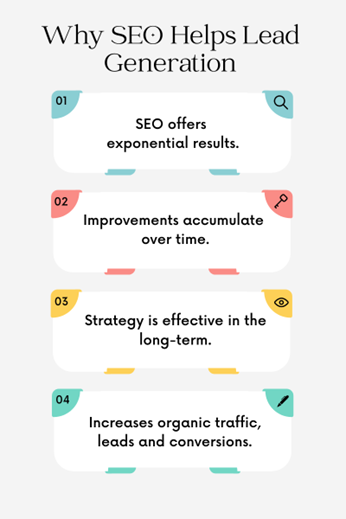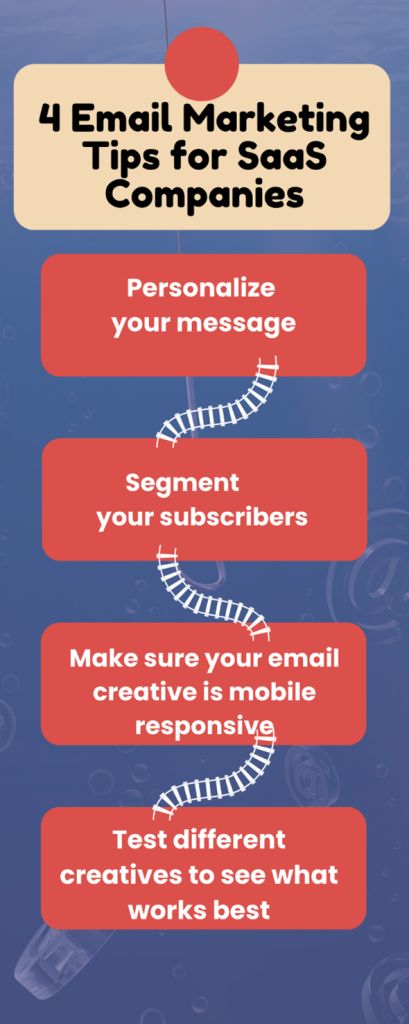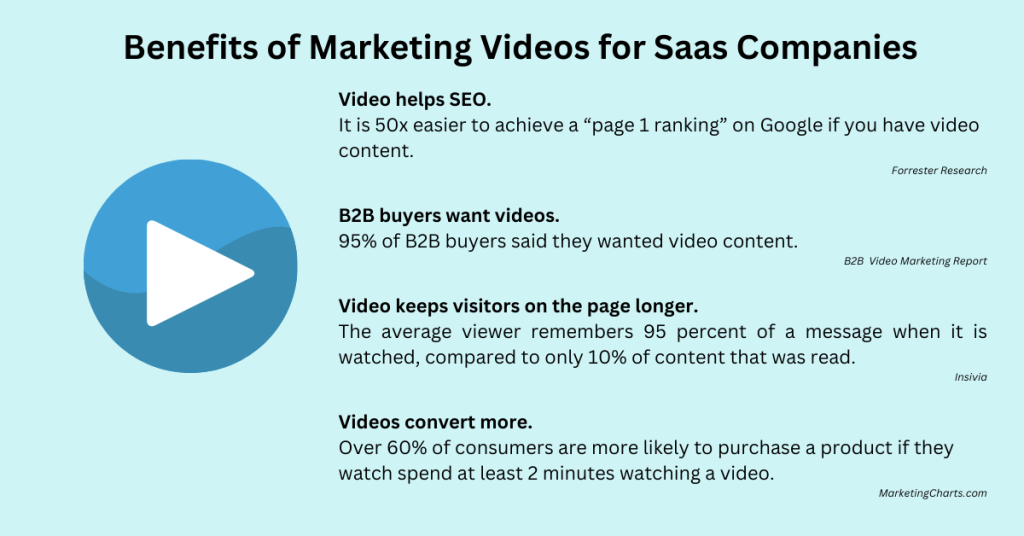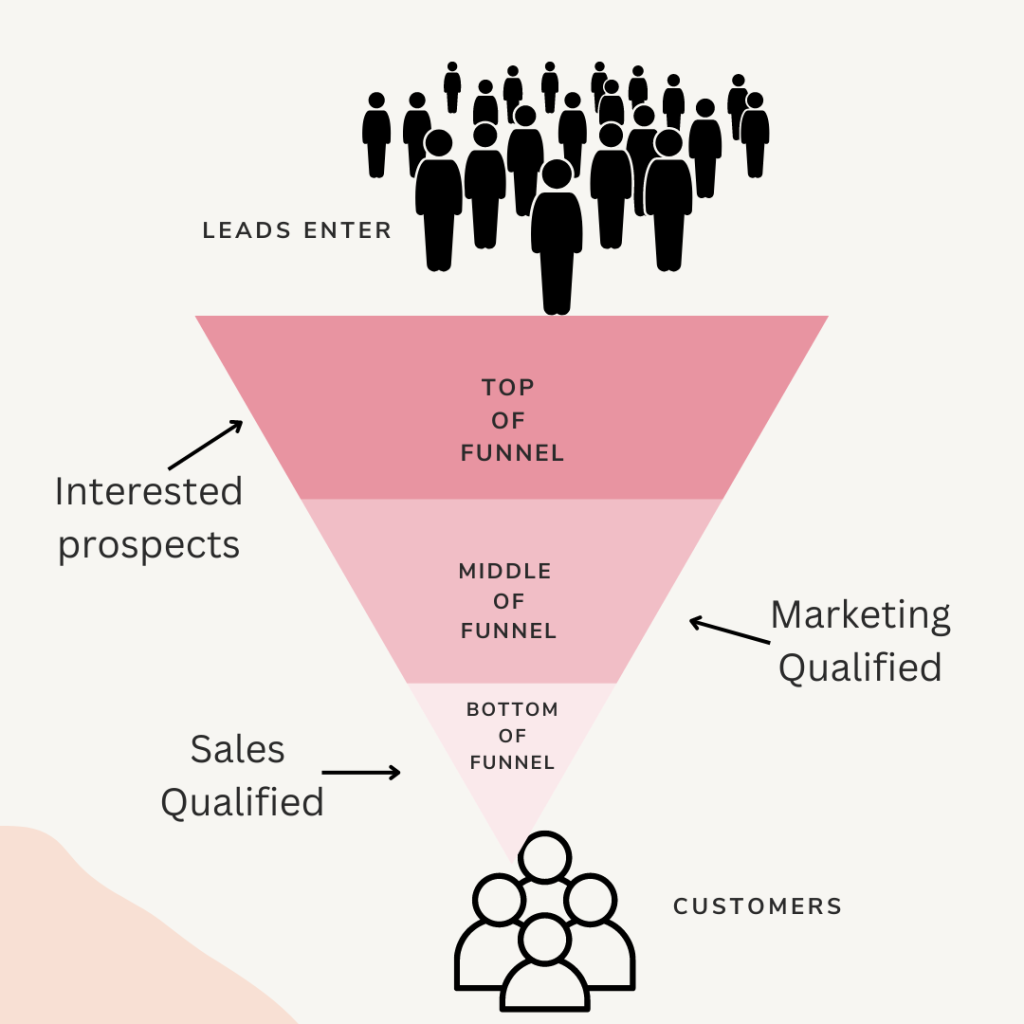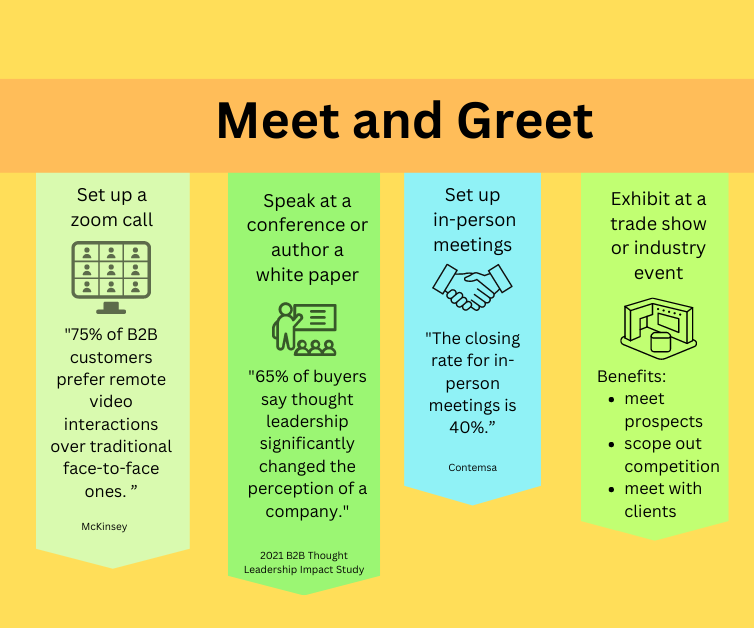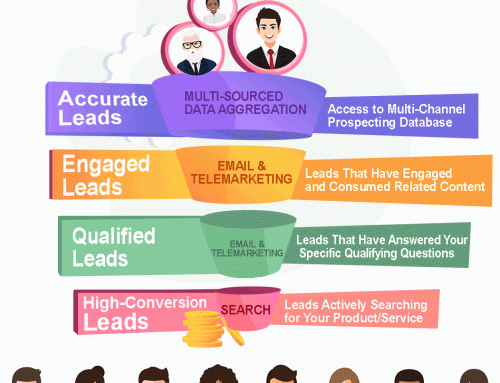The Software as a Service (SaaS) sector has emerged as a highly promising field, with companies increasingly relying on SaaS platforms for their operational needs. Remarkably, the SaaS market has seen over 500% growth in just seven years.
With the proliferation of SaaS lead generation firms, securing leads for your SaaS enterprise is becoming increasingly difficult in a fiercely competitive landscape.
It’s noteworthy that half of the consumers devote upwards of 75% of their decision-making time to research prior to a purchase. Therefore, captivating the interest of your entire target audience necessitates a well-crafted, actionable lead-generation plan.
This blog will provide you with several effective SaaS lead-generation strategies that are essential for attracting new leads to your SaaS business.
B2B SaaS Lead Generation – Table Of Contents
- Know Your Ideal SaaS Customer – Defining Your Target Audience is Crucial for Success
- Maximize Your Website’s Potential – Website Optimization Can Skyrocket Your SaaS Business Growth
- Streamline Your Marketing Efforts – Invest in Marketing Automation Software
- Leverage Content Marketing - Attract, Engage, and Convert Your Target Audience
- Engage in Social Media Platforms to Boost Your Bottom Line
- Unlock the Potential of Search and Dominate the SaaS Industry
- Leapfrog Your Competition with Targeted PPC Advertising
- Communicate Strategically to Each Customer Segment Using Email Marketing
- Test, Test, and Test Again
- Don’t Just Tell Your Story; Show It Through Video
- Increase ROI in Less Than an Hour with Informative Webinars
- Get More Eyes on Your Brand on Social Media Today
- “Event-ize” Your Business and Make the Connections that Count
- Tap into Your Network – Make Referral Marketing Work for You
- Monitor Analytics – Get Insight into What Works and What Doesn’t and Adjust
-
Know Your Ideal SaaS Customer – Defining Your Target Audience is Crucial for Success
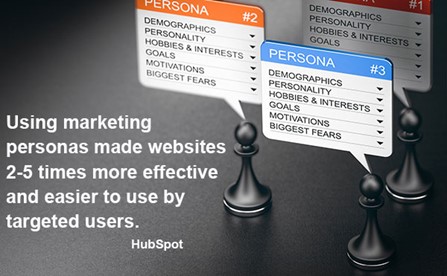
A buyer persona is a semi-fictional representation of a business’s ideal customer based on real data and research. By creating buyer personas, businesses can gain valuable insights into their customers’ needs, preferences, motivations, and behavior patterns. As a result, businesses can better connect with their customers and increase their chances of converting leads into loyal customers. By understanding their customers’ wants and needs, businesses can create more effective marketing campaigns that drive more sales.
-
Maximize Your Website’s Potential – Website Optimization Can Skyrocket Your SaaS Business Growth
Your website is the first point of contact with your customers. It is crucial to ensure that your website is optimized for conversions. An effective website is designed with user experience in mind, is fast to load, easy to navigate, has a clear value proposition, and has a clear call to action.
An optimized website reduces bounce rates, increases engagement, and boosts the site’s search engine ranking. Investing in an optimized website can build trust with potential customers, increase brand awareness, and drive more traffic and revenue. With the increasing competition in the digital space, an optimized website is no longer optional but necessary for businesses to thrive in today’s market.
-
Streamline Your Marketing Efforts – Invest in Marketing Automation Software
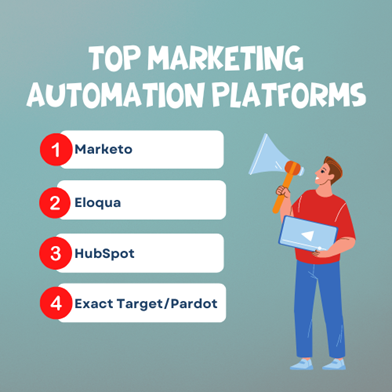
A typical marketing automation platform has several features, including lead capture forms, email marketing, lead nurturing, lead scoring, and analytics. With lead capture forms, businesses can easily capture contact information from website visitors, including email addresses, which can then be used to create a targeted email list. Lead scoring enables businesses to rank leads based on their level of engagement, which helps prioritize follow-up efforts. Analytics provide businesses with valuable insights into the effectiveness of their marketing campaigns, allowing them to make data-driven decisions. Overall, a marketing automation platform can help businesses optimize their marketing efforts, increase efficiency, and achieve better results.
-
Leverage Content Marketing - Attract, Engage, and Convert Your Target Audience
Content marketing is a great way to attract and engage your target audience. SaaS companies can create valuable content such as blog posts, whitepapers, case studies, and videos to educate their audience about their software, including its features and benefits. Different channels require different types of content to be effective. For example, engaging visuals are essential for social media, while longer-form content is better suited for webinars and blog posts. Creating content tailored for each platform will ensure your message reaches the right audience.
-
Engage in Social Media Platforms to Boost Your Bottom Line
SaaS companies should be active on social media platforms like LinkedIn, Twitter, and Facebook. SaaS marketers can use social media to share content, engage with their audience, and promote their products. By consistently – and consistently is key here -posting engaging and informative content, SaaS companies can quickly attract new followers and potential customers. And the results can be immediate!
Social media can be a cost-effective marketing strategy for SaaS companies. While traditional advertising methods can be expensive, social media advertising is often more affordable.
-
Unlock the Potential of Search and Dominate the SaaS Industry
Search engine optimization (SEO) is critical to any marketing strategy. Choosing the right keywords for your industry is necessary if you want to be on the first page of Google and other search engines. SaaS companies should optimize their website for search engines to improve their visibility and attract organic traffic.
With SEO, your SaaS company can showcase its expertise, authority, and trustworthiness in the industry, leading to higher customer retention rates and improved customer loyalty.
There are currently approximately 30,000 SaaS companies. Globally, there are about 14 billion SaaS customers. The US has the largest proportion of SaaS companies (around 60%). That’s a lot of competition! It’s important to hone your keywords to the particular industry your software is created for.
Keywords are important because they help search engines understand a website’s content and match it to relevant search queries. By including relevant keywords in a website’s content and structure, businesses can increase their chances of ranking higher in search engine results pages (SERPs) for those keywords. By researching and selecting the right keywords, businesses can better understand their target audience’s search intent and create content that meets their needs and interests.
-
Leapfrog Your Competition with Targeted PPC Advertising
PPC advertising is a great way to reach your target audience and drive traffic to your website. You can use platforms like Google Ads, Bing PPC, and LinkedIn Ads to create targeted campaigns appearing in prominent positions on the SERP. 85% of the top 100 SaaS companies (Salesforce, Hubspot, Atlassian, Freshworks) use Google Ads.
-
Communicate Strategically to Each Customer Segment Using Email Marketing
One of the most effective marketing channels, email marketing is a powerful tool to nurture and engage your audience and generate leads for your business. SaaS companies can use email marketing to send targeted messages to their audience to promote their software products and educate them on how to use their software to its potential.
Email allows businesses to reach a large audience quickly and cost-effectively. Email marketing campaigns can be highly targeted and personalized, allowing businesses to tailor their messages to the needs and interests of their audience. This can lead to higher engagement rates and, ultimately, more leads.
Email marketing is great for lead generation because it allows businesses to nurture leads over time. By sending regular newsletters, updates, and offers, businesses can build relationships with their email subscribers and establish trust and credibility. This ongoing engagement can lead to more conversions and more loyal customers.
Email marketing also offers valuable data insights that businesses can use to refine their lead-generation strategies. By tracking email open rates, click-through rates, and conversion rates, businesses can identify which campaigns and messages resonate with their audience and which are not. This information can help businesses refine their messaging and targeting to generate more leads and improve their overall marketing effectiveness.
If you don’t have enough email addresses in your house file to get the leads you need, there are responsive, quality b2b databases that rent email addresses. A good b2b database for marketing is one that contains accurate and relevant information about the target audience. It will offer firmographic data selections such as company size, sales volume, job function, job title, industry, geo, and purchasing history. A good database should also be regularly updated and cleaned to contain current and accurate information.
Across all sectors, the average email open rate is 18%, the click-through rate is 2.6%, and click to open rate is 14.1%. (Statista) The open rate for IT/Tech/ Software offers is 22.7%, with a 2% click-through rate.
-
Test, Test, and Test Again
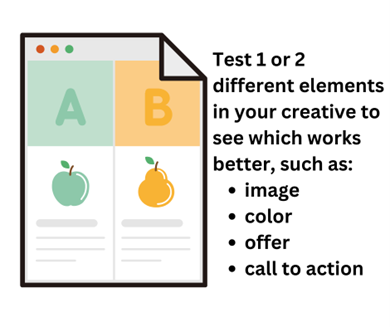
A/B testing allows businesses to identify which elements of a campaign resonate with their audience and which do not, leading to more effective marketing strategies. For example, SaaS companies can a/b test copy with one creative featuring benefits and the other focusing on software features. The results of these copy variations may show what is more important to a potential buyer during the sales process.
-
Don’t Just Tell Your Story; Show It Through Video
Video content is among the most powerful tools for engaging with customers and prospects. Use videos to showcase your product offerings, explain complex concepts in an easy-to-understand way, or provide industry insights highlighting why your brand is the best choice. Share your videos on platforms like YouTube, Vidyard, and Vimeo. SaaS companies should maximize videos for demos, case studies, and tutorials.
-
Increase ROI in Less Than an Hour with Informative Webinars
Webinars are a great way to educate your audience about your product and industry trends. Webinars can be live or pre-recorded video presentations on a specific topic or product. You can create webinars to showcase your SaaS features, share customer success stories, and answer customer questions.
Webinars offer several lead-generation benefits, including capturing attendees’ contact information. Businesses can require attendees to register for the webinar, providing their name and email address in exchange for access to the content. This information can be used to build a targeted email list and nurture leads over time.
Webinars also provide high engagement and interaction, allowing businesses to build relationships with their audience and answer their questions in real-time during live events. This level of engagement can lead to higher conversion rates and more qualified leads.
Finally, webinars offer a cost-effective and scalable way to reach a large audience. With the rise of remote work and virtual events, businesses can reach potential customers worldwide without traveling for in-person events. This scalability allows businesses to generate more leads and increase their ROI.
-
Get More Eyes on Your Brand on Social Media Today
Influencer marketing is a great way to reach a wider audience and build credibility. Many SaaS companies partner with industry influencers to promote their software. Social media influencers have large and engaged followings on social media, and partnering with them can help SaaS companies reach new audiences and increase brand visibility. Influencers often have a loyal following because they communicate authentically and genuinely with their audience. When influencers endorse a SaaS product, it can come across as a personal recommendation rather than a traditional advertisement.
Brand ambassadors are also effective influencers. Satisfied customers make great brand ambassadors on social media. Customers’ opinions and experiences are perceived as more credible and trustworthy than traditional advertising messages. When customers share positive feedback about a brand, it can significantly impact potential customers’ perceptions and attitudes toward the brand. Employees are also great brand ambassadors. They have first-hand experience working for the company. They can share their personal experiences, knowledge, and insights with customers, enhancing the company’s credibility.
-
“Event-ize” Your Business and Make the Connections that Count
Attending industry events is a great way to network, learn about industry trends, and showcase your product. Your SaaS company should participate in relevant industry events to connect with potential customers and industry influencers. SaaS companies can achieve their business goals and drive revenue growth at live events or trade shows by increasing brand visibility, networking with industry leaders, conducting market research, building their brands, and generating sales.
-
Tap into Your Network – Make Referral Marketing Work for You
Referral marketing is a powerful way to acquire new customers. Referred prospects convert more to paying customers than those who discover the product through traditional marketing methods because referred prospects are likelier to trust the recommendation of someone they know and have a personal connection with.
It pays to incentivize
Many SaaS companies incentivize their existing customers to refer their friends and colleagues to their products.
Ways to incentivize include:
- Providing exclusive access to new features, credits, discounts, or premium customer service.
- Offering giveaways or prizes, such as gift cards or free merchandise.
- Offering to make a charitable donation on behalf of the existing customer and the referred prospect.
-
Monitor Analytics – Get Insight into What Works and What Doesn’t and Adjust
It is essential to monitor your marketing analytics to measure the success of your marketing campaigns. To optimize marketing strategy, your SaaS company should track its website traffic, conversion rates, email open rates, and social media engagement.
Analytics is a critical tool for understanding and optimizing the sales funnel. The sales funnel visually represents the buyer journey, from the initial awareness stage to the final purchase stage. Analytics provides businesses with data and insights into each stage of the funnel, allowing them to identify areas for improvement and optimize their marketing strategies to increase conversions and revenue.
At the top of the funnel, analytics can help businesses measure the effectiveness of their marketing campaigns in generating awareness and attracting potential customers. Businesses can determine which channels are most effective in driving traffic and engagement by tracking website traffic, click-through rates, and other metrics. This information can be used to refine their targeting and messaging to better reach their target audience.
In the middle of the funnel, analytics can help businesses identify potential roadblocks or bottlenecks that may be preventing leads from moving down the funnel. By analyzing conversion rates and other metrics, businesses can identify which leads are most likely to convert and which ones require further nurturing. This information can be used to tailor marketing messages and strategies to better engage and convert leads.
At the bottom of the funnel, analytics can help businesses track and measure the success of their sales efforts, from the initial contact to the final purchase. Businesses can identify the most effective sales strategies by tracking metrics such as close rates, purchase size, and customer lifetime value and refine their processes to increase revenue and customer loyalty.
B2B lead generation for SaaS companies requires a comprehensive approach that includes a mix of strategies such as content marketing, social media, SEO, PPC advertising, email marketing, webinars, influencer marketing, events, referral marketing, marketing automation, and analytics. By implementing these 15 strategies, you can position your SaaS company as a leader in the industry.
Utilizing innovative tactics, staying up-to-date on trends, and investing in customer service will also optimize your lead-generation efforts. Customer service should always be a top priority. Focus on providing excellent customer support by responding quickly to inquiries and resolving issues efficiently. This will help build trust and loyalty among potential and current customers, resulting in long-term success for your SaaS company.
The digital landscape is ever-changing, so SaaS companies must stay ahead of the curve and update their marketing strategies. Yearly reviews of existing campaigns and methods should be conducted to identify where improvements can be made, what’s working well, and what new opportunities there may be. With an effective marketing plan in place, SaaS companies can build a strong brand, attract new customers, and grow their revenue.
What do SaaS Companies Sell?
SaaS (Software as a Service) companies develop and provide software applications that are delivered to customers over the internet. Users can access these applications via a web browser or a mobile app, and they are typically provided on a subscription basis.
SaaS companies can offer various software solutions, such as project management software, customer relationship management (CRM) software, HR management software, accounting software, and more. The software is hosted on the company’s servers, so customers don’t need to install or maintain any software on their own devices.
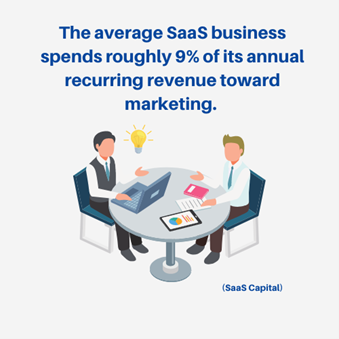
SaaS companies typically operate on a recurring revenue model, with customers paying a monthly or annual subscription fee for access to the software. This model can provide a predictable revenue stream and allows companies to scale their business more efficiently than traditional software companies that rely on one-time purchases.
SaaS companies provide a convenient and cost-effective way for businesses and individuals to access software applications without the need for costly infrastructure or maintenance.
Overall Marketing Strategy
SaaS companies must focus on several key areas in their marketing efforts to stand out in a highly competitive market.
Firstly, SaaS companies must clearly communicate their products’ benefits and features to potential customers. This means identifying the pain points that their target audience is experiencing and highlighting how their software can solve these problems. Effective marketing messaging should be simple, concise, and easy to understand while also conveying the product’s unique value proposition.
Secondly, SaaS companies need to establish trust with their potential customers. This can be achieved through a strong content strategy, such as case studies, testimonials, and reviews.
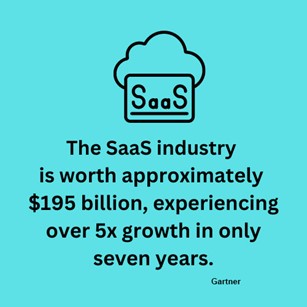
B2B lead generation for SaaS companies can be challenging because of the competitive market. This article will discuss 15 B2B lead generation strategies for SaaS companies that can help them build their brand and grow their customer base and revenue.
The Importance of Demos and Trial Offers
Product demonstrations (demos) are critical for SaaS companies for several reasons:
- Demos can be a powerful tool for closing sales. By showing the product in action and addressing customer questions and concerns, SaaS companies can help potential customers make informed decisions and ultimately purchase the product.
- Demos allow SaaS companies to showcase their product features and functionality in a live setting.
- Demos provide potential customers with a hands-on experience of the product, which can help them understand how it works and how it can benefit their business. This can be particularly important for complex or technical products.
- Demos can help SaaS companies build trust with potential customers. By showing the product in action and answering questions in a transparent and honest way, SaaS companies can demonstrate their expertise and commitment to customer satisfaction.
Trial offers allow potential customers to explore the product and its features before committing to a purchase. This can encourage potential customers to take a closer look at the product and understand how it can benefit their business. Trial offers can provide SaaS companies with valuable customer feedback. By allowing customers to try the product, SaaS companies can gather insights into how the product is being used and identify areas for improvement. And finally, trial offers can increase conversion rates by providing potential customers with a low-risk way to try the product before committing to a purchase.
B2B SaaS Lead Generation – FAQs
What is SaaS Lead Generation?
SaaS Lead Generation: A Strategic Approach to Attract Potential Clients
SaaS lead generation encompasses a series of strategic actions aimed at attracting potential clients interested in your software solution. This process is essential for building a solid customer base and involves several key steps:
- Identifying Potential Leads: The first step involves pinpointing the ideal leads who stand to gain the most from your SaaS offering.
- Lead Nurturing: This phase focuses on engaging high-value leads through various tactics, including cold emails, social media engagement, case studies, and more, to build interest and trust.
- Converting Leads to Customers: Successful engagement leads to this crucial phase, where strategies like webinars, product demos, and enticing offers are employed to convert leads into paying customers.
- Customer Retention: The final step ensures that customers remain satisfied and loyal through outstanding support, regular updates, and loyalty programs, thereby fostering long-term relationships.
Bear in mind that SaaS lead generation encompasses a series of strategic approaches. It necessitates the collective efforts of the marketing, sales, and customer support teams to cultivate and sustain a committed user base for your SaaS offering.
Must-Have Tools for B2B SaaS Lead Generation
Cold Email Outreach with Saleshandy For seamless lead generation for your SaaS product via cold email outreach, Saleshandy stands as the ideal choice. It allows you to execute several personalized cold email campaigns efficiently, providing value to your prospects and enhancing the likelihood of acquiring high-quality leads.
SEO and Content Marketing with Ahrefs
Ahrefs serves as an all-encompassing SEO instrument, facilitating the refinement of your content approach and elevating your website and content to the pinnacle of search engine results pages (SERPs).
Utilizing Ahrefs allows you to identify the queries your potential customers are making and develop content that achieves high rankings while also striking a chord with your audience. It’s akin to possessing a search engine confidant, directing you to enhance your digital footprint and attract a greater number of qualified prospects.
EverWebinar for Webinar Hosting
EverWebinar enables the creation of automated webinars designed to engage and convert your audience, leveraging the convenience of automation. It is ideal for presenting high-definition tutorials or PowerPoint presentations of exceptional quality.
With EverWebinar, you have the ability to schedule your webinars at your convenience, offer videos on demand to your viewers, and much more.
Additionally, it provides comprehensive analytics to track your performance and includes features for conducting polls and surveys.
Sendbird for AI-Powered Chatbots
Sendbird’s AI-powered chatbots are engineered to interact with your potential customers and address their inquiries. By employing natural language processing, these chatbots deliver responses that mimic human conversation, providing your prospects with the feeling that they are always being attended to by a member of your team.
You have the opportunity to customize each interaction through personalized playbooks, ensuring your visitors receive the individualized attention they value.
Sendbird’s chatbots are primarily focused on transforming casual website visits into significant engagements through proficient communication.
LinkedIn Sales Navigator for Social Selling
LinkedIn Sales Navigator is a leading platform for B2B social selling, providing detailed insights into your target audience. It is crafted to facilitate direct connections with decision-makers, effectively circumventing traditional intermediaries.
Moreover, the capability to synchronize Sales Navigator with your CRM system allows for centralized management of prospect information. The benefits offered make this tool an indispensable component of your social selling toolkit.
SaaS Statistics and Trends (2024)
- As of 2023, the value of the SaaS market exceeds $195 billion.
- Over the last seven years, the SaaS sector has expanded by approximately 500%.
- SaaS is considered the most critical technology for business success.
- The United States hosts about eight times as many SaaS companies as any other nation.
- In the IT security industry, cloud security represents the segment with the fastest growth.
The US SaaS industry is expected to more than double by 2025
- Currently, it holds the position as the world’s largest SaaS market by a significant lead, with an estimated value of $108.4 billion in 2020.
- This value is anticipated to rise to $225 billion by 2025, marking an increase of over 100%.
- Forecasts suggest that the US will continue to dominate as the largest SaaS market globally throughout this period.
The UK SaaS industry is anticipated to nearly double in size from 2020 to 2025
- The UK stands as a significant player in the SaaS application market, with the sector valued at around €7.5 billion in 2020. This figure is projected to reach €14.5 billion by 2025.
- Likewise, the SaaS markets in China, India, and Brazil are forecasted to experience growth of more than two-fold by 2025.
The lead-generation strategies that B2B SaaS marketers relied on six years ago are no longer effective today. For successful new demand creation for your business, it’s crucial to invest in demand generation channels, engage in customer interviews, implement multi-touch advertising campaigns, and establish a robust Account-Based Marketing (ABM) foundation.

